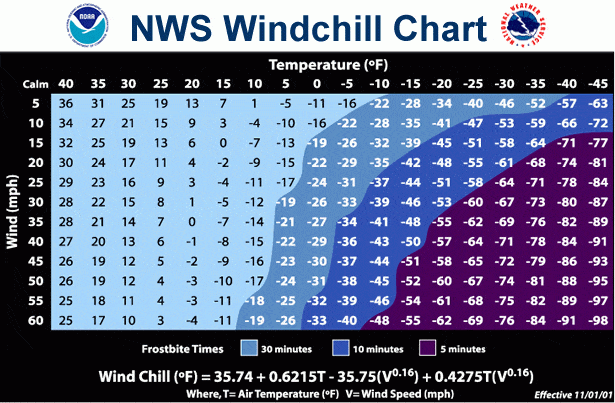This week the American Midwest will experience what is commonly known as a polar vortex, a regularly occurring meteorological event that has taken a turn for the extraordinary.
According to NPR, a temperature of -44 was measured in North Dakota on Wednesday. For reference of how extremely chilling the air in North Dakota is, weather services report that it is currently warmer at the North Pole. Subzero temperatures are being reported across the Midwest — some low enough to rival Siberia.
Freshman and Chicago native Makyla Oviedo-Rodriguez said that she never experienced temperatures so frigid when growing up, and that her family always had a plan to tackle the extreme weather.
“One of the biggest changes I remember growing up that we did was the road would be really slick and our car was prone to sliding because of its weight,” Oviedo-Rodriguez said. “So my family would put a tire or some really heavy stuff in our trunk just so we could increase weight and thus friction.”
She also said although her family members would be allowed to work from home, her high school would often stay open regardless of the weather. This time, however, seems different.
“To hear from everyone back home, both my friends and family, about school being canceled and that many people are just staying indoors is insane to me,” Oviedo Rodriguez said.
Assistant chemistry professor Melinda Huff offered insight as to why this polar vortex is so extreme. She says the change has to do with unusual behavior from particular jet streams.
“We have multiple air masses that originate in a specific location in the U.S. that interact with things like the jet stream,” Huff said. “Each major air mass has specific climate characteristics. Just as we have the jet stream, really called a Subtropical jet stream, there is a polar jet stream that occurs around the Arctic. If that polar jet dips farther south, it allows for the extremely cold temperatures (usually confined to Canada, for example) to enter the U.S. Both the polar jet and the jet stream have both dipped fairly far south this week, which is not common.”
Senior Hannah Cummins hails from Minnesota, and says that although she experienced subzero temperatures as a child, they were never as cold as this polar vortex. She spoke to the necessary steps many families have to take in order to stay warm and safe during the extreme weather.
“When it gets this cold, if you go outside for more than a minute without proper attire, frostbite can set in a very short time,” Cummins said. “ Indoor activities such as movies or games are a must. My mom made sure to get the food and supplies we needed before the cold came in. Mail services are not delivering today because the cold is too dangerous.”
Oviedo-Rodriguez said that as a child she worried for her safety after seeing traffic accidents caused by weather-related events.
“Our biggest risk growing up were accidents and people being affected by the icy roads or snow blowing everywhere. When the weather was really bad, you had cars and vans in ditches every mile is what it felt like,” Oviedo-Rodriguez said.
